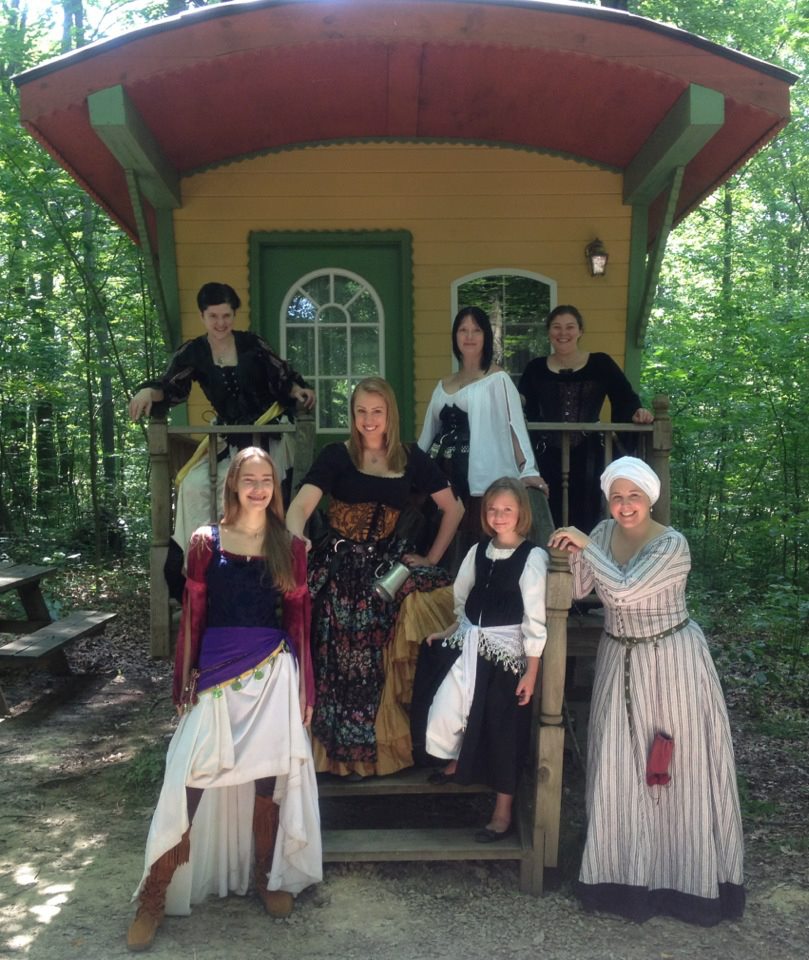
Legends & Lore – Gypsy Wagons
In Legends and Lore we feature interesting historical and mythological tidbits associated with Ravenwood Castle. This week’s Legends and Lore is written by our Assistant Innkeeper, Abby Kutscher.
At Ravenwood Castle we constantly strive to bring you experiences you can’t find anywhere else. Not everyone gets to vacation in an Ohio castle, right? Well, not everyone gets to sleep in a Gyspy Wagon either, but if you visit us at Ravenwood Castle, you too can experience what we lovingly refer to as “camping with a roof.”
Gypsy Wagons, or vardos, were first used by the Romani people (commonly referred to as gypsies) in about 1850, and are still used by a small percentage of the Romani population to this day. As a nomadic people, the Romani traveled from place to place and used these wagons both to sleep in and as a means to carry their possessions. Think of them as the precursor to motor homes. Of course, motors did not exist yet; these wagons were pulled by horses.
Gypsy wagons were traditionally presented as a gift for a newlywed couple, and took about 6 to 12 months to build. They were colorfully painted and ornately decorated in accordance with the wealth of the family. Historically, there existed six different types of vardos: Brush, Reading, Ledge, Bowtop, Openlot, and Burton.
The Burton was the original gypsy wagon and differed from its descendants in that it was not decorated. The Reading was the first to be highly decorated. It was admired for both its beauty and its practicality. The Brush was different in that it was the only wagon to have a shuttered half-door at the back that led to a set of steps down from the wagon. Then there was the Ledge— a cottage shaped wagon with high ceilings of about 12 feet! The Bowtop wagon had a lightweight canvas top as opposed to a wooden ceiling. And finally, the Openlot also had a canvas top but had a curtained opening instead of a door.
Despite their differences, almost all wagons were equipped with cabinets, built-in seating, and sleeping bunks. Most included a skylight. They also tended to include a cooking stove and therefore had chimneys as well.
Although most Romani no longer live in wagons, the majority still takes pride in their traditional vardos and show them at horse fairs around Europe.
At Ravenwood, our Gypsy Wagons are available as a camping alternative from May through October. They include cabinets, a kitchenette with a table and chairs, a mini-fridge, and a microwave, and bunks on which guests can set up sleeping bags or air mattresses. Each has its own private bathhouse a short stroll down the wooded path.
Come check out our Gypsy Wagons, and spend your vacation imagining what it was like to be a Romani in 1850!


 Quoth the Raven
Quoth the Raven